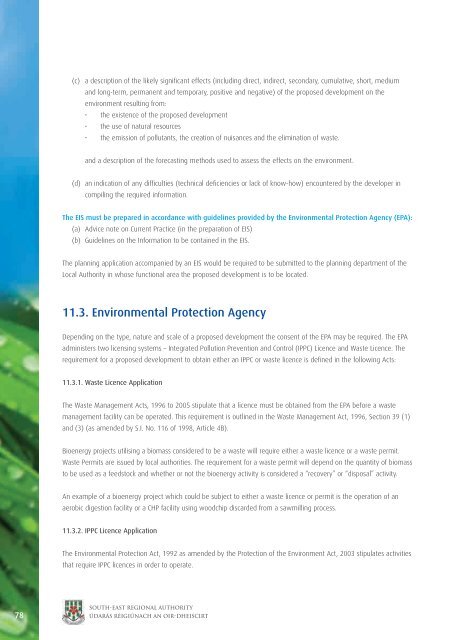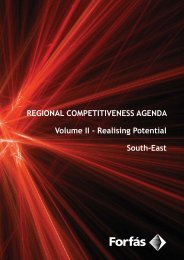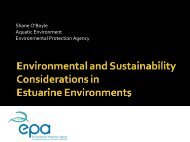Bioenergy Implementation Plan - South-East Regional Authority
Bioenergy Implementation Plan - South-East Regional Authority
Bioenergy Implementation Plan - South-East Regional Authority
You also want an ePaper? Increase the reach of your titles
YUMPU automatically turns print PDFs into web optimized ePapers that Google loves.
(c) a description of the likely significant effects (including direct, indirect, secondary, cumulative, short, medium<br />
and long-term, permanent and temporary, positive and negative) of the proposed development on the<br />
environment resulting from:<br />
• the existence of the proposed development<br />
• the use of natural resources<br />
• the emission of pollutants, the creation of nuisances and the elimination of waste.<br />
and a description of the forecasting methods used to assess the effects on the environment.<br />
(d) an indication of any difficulties (technical deficiencies or lack of know-how) encountered by the developer in<br />
compiling the required information.<br />
The EIS must be prepared in accordance with guidelines provided by the Environmental Protection Agency (EPA):<br />
(a) Advice note on Current Practice (in the preparation of EIS)<br />
(b) Guidelines on the Information to be contained in the EIS.<br />
The planning application accompanied by an EIS would be required to be submitted to the planning department of the<br />
Local <strong>Authority</strong> in whose functional area the proposed development is to be located.<br />
11.3. Environmental Protection Agency<br />
Depending on the type, nature and scale of a proposed development the consent of the EPA may be required. The EPA<br />
administers two licensing systems – Integrated Pollution Prevention and Control (IPPC) Licence and Waste Licence. The<br />
requirement for a proposed development to obtain either an IPPC or waste licence is defined in the following Acts:<br />
11.3.1. Waste Licence Application<br />
The Waste Management Acts, 1996 to 2005 stipulate that a licence must be obtained from the EPA before a waste<br />
management facility can be operated. This requirement is outlined in the Waste Management Act, 1996, Section 39 (1)<br />
and (3) (as amended by S.I. No. 116 of 1998, Article 4B).<br />
<strong>Bioenergy</strong> projects utilising a biomass considered to be a waste will require either a waste licence or a waste permit.<br />
Waste Permits are issued by local authorities. The requirement for a waste permit will depend on the quantity of biomass<br />
to be used as a feedstock and whether or not the bioenergy activity is considered a “recovery” or “disposal” activity.<br />
An example of a bioenergy project which could be subject to either a waste licence or permit is the operation of an<br />
aerobic digestion facility or a CHP facility using woodchip discarded from a sawmilling process.<br />
11.3.2. IPPC Licence Application<br />
The Environmental Protection Act, 1992 as amended by the Protection of the Environment Act, 2003 stipulates activities<br />
that require IPPC licences in order to operate.<br />
78<br />
south-east regional authority<br />
údarás réigiúnach an Oir-DheisCIrt





